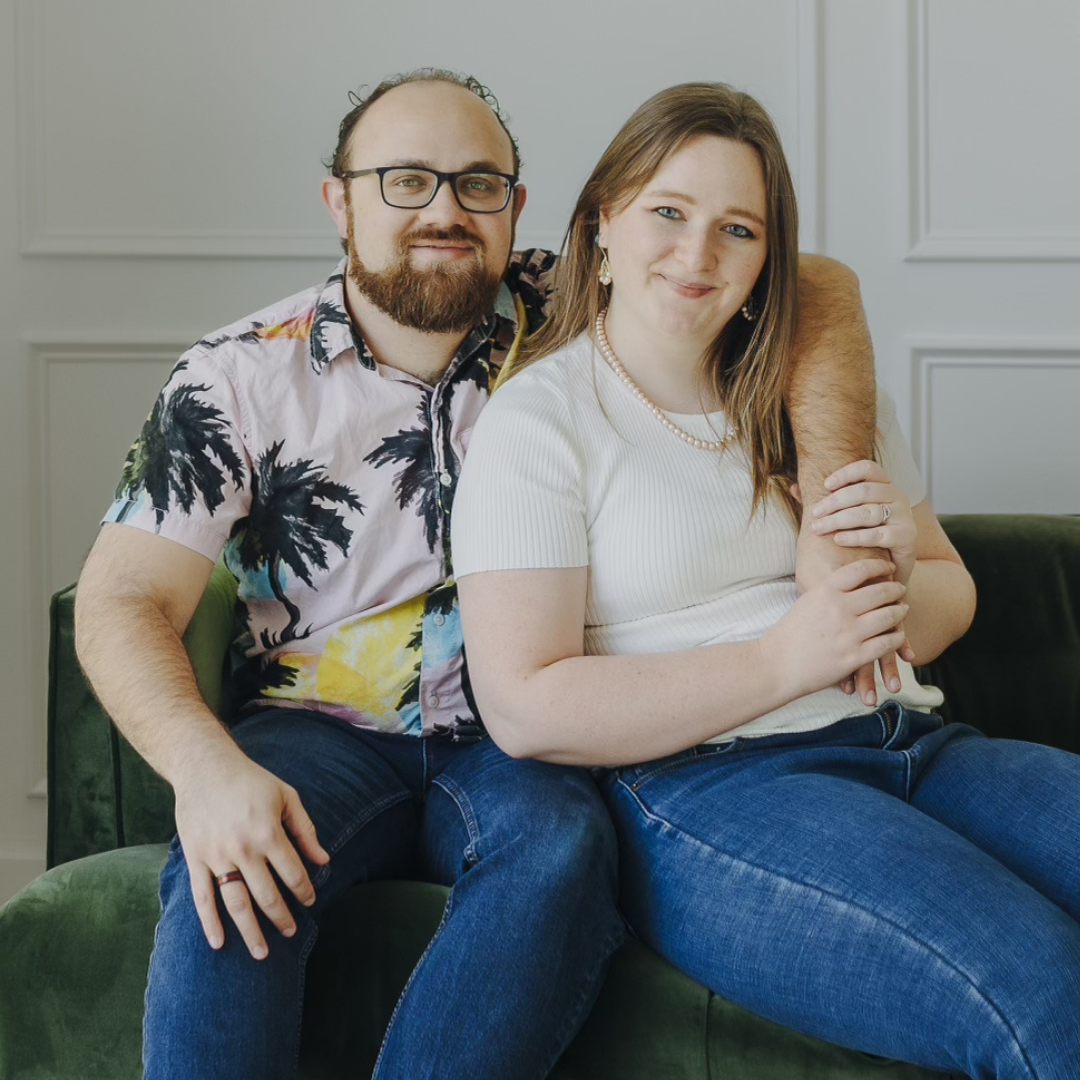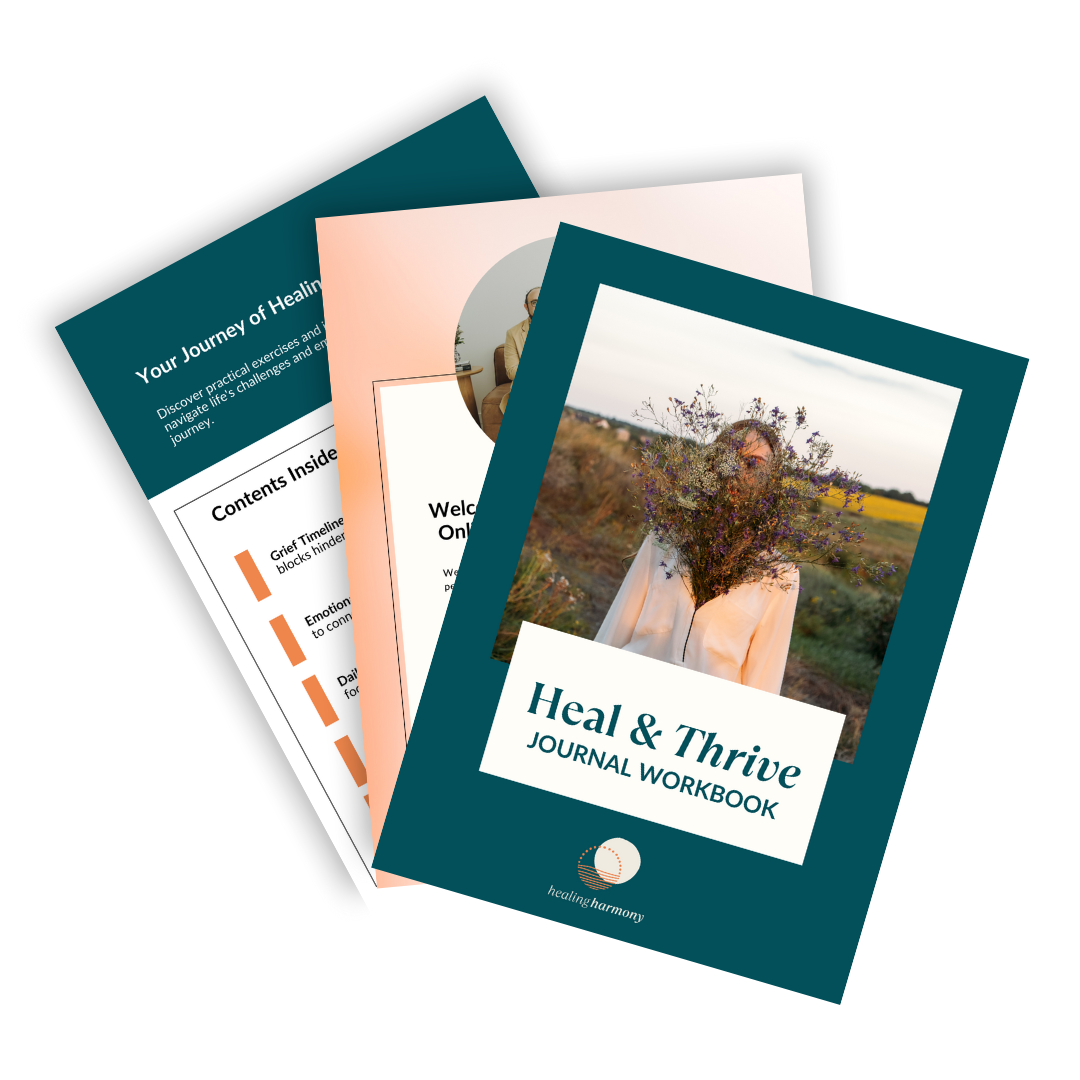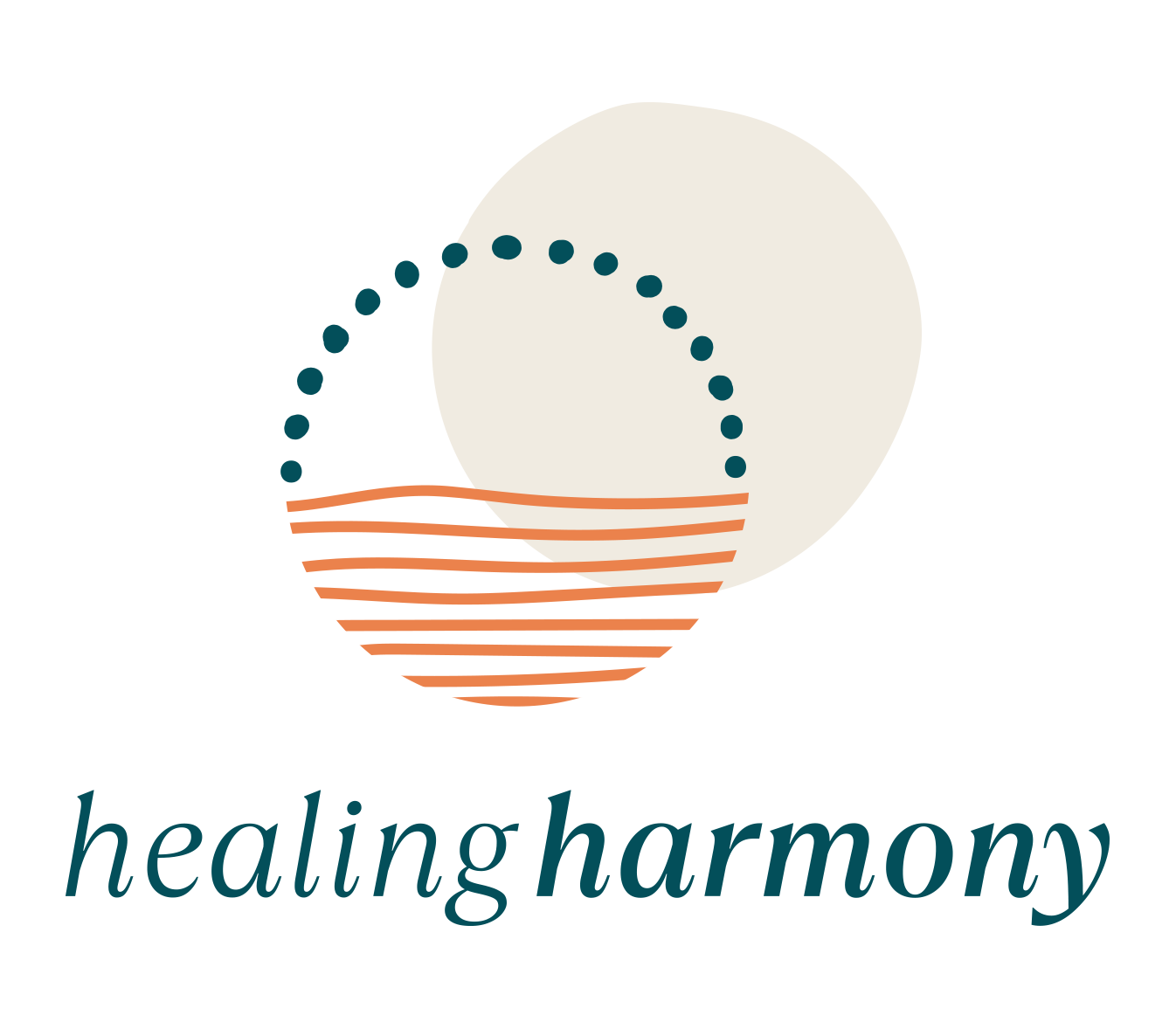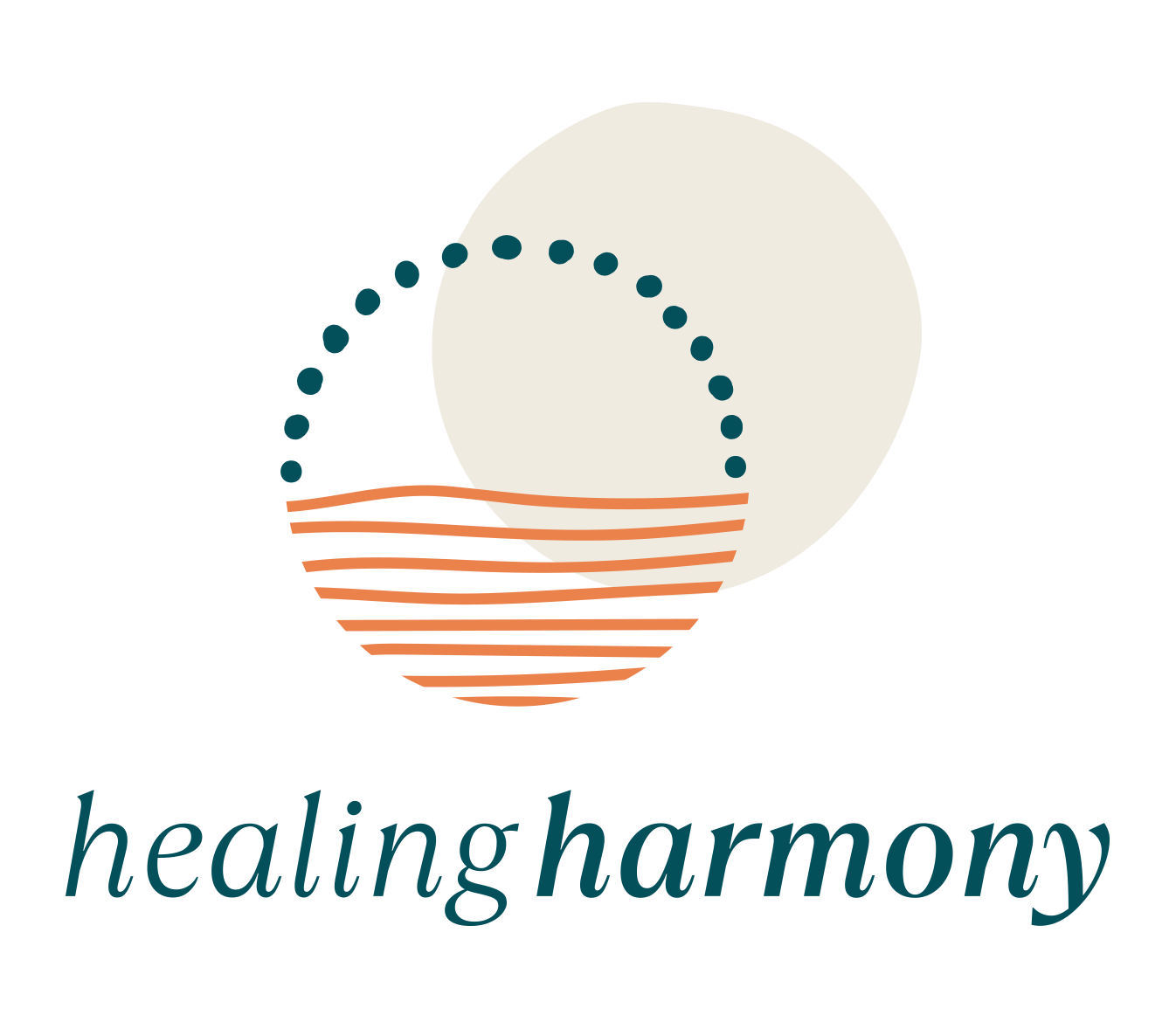Finding your ADHD type: why knowing your brain changes everything
When it comes to understanding ADHD, one of the most overlooked first steps is knowing your specific ADHD type. Many people assume ADHD looks the same for everyone — distracted, impulsive, hyperactive. But in reality, ADHD presents in different ways, and recognizing your type can completely shift how you manage symptoms, communicate your needs, and build effective support strategies.
Whether you're a teenager struggling to concentrate in class or an adult juggling tasks that never seem to get finished, understanding your unique brain wiring is key. Instead of trying every productivity hack or self-help trend, learning your ADHD type gives you a framework that actually fits your experience — not someone else’s.
In this post, we’ll explore the different ADHD types, how to identify yours, and why this knowledge is a powerful foundation for thriving with ADHD.
In case we haven't met yet, we’re Jeffrey & Rebekah from Healing Harmony Counseling, therapists and life coaches for young adults and teens navigating life's complex journeys. You deserve to understand your mind, your story, and your path forward.
Today, let's walk together into the heart of one of the most common and misunderstood questions:
What is ADHD really — and why understanding your type matters
ADHD isn't just about being "hyper" or "forgetful."
It’s waking up every morning already overwhelmed by the noise inside your own mind. It’s caring deeply about doing your best—and feeling devastated when your brain seems to pull you in a hundred different directions instead. It’s hearing “Just try harder” over and over until you start to wonder if you're simply broken.
ADHD is a neurological difference that touches everything—your focus, your emotions, your memory, your ability to organize your day, your sense of time, even how you feel energy moving through your body.
According to the Centers for Disease Control and Prevention (CDC), approximately
11.3% of U.S. children and adolescents aged 5–17 years have been diagnosed with ADHD. For many, the challenges don't magically disappear when they turn eighteen—they grow and evolve into adulthood too.

Knowing your ADHD type can change everything
It’s the difference between lying awake at night, blaming yourself for unfinished tasks, forgotten conversations, missed dreams—and finally exhaling with the understanding:
"It’s not that I’m broken. My brain just plays by a different set of rules."
When you understand your ADHD type, you’re not just slapping on a label.
You're giving your life story a
context, a
language, and most importantly—a
roadmap to healing.
It’s no longer about trying to "fix" yourself.
It’s about learning the rhythms of your mind, finding tools that honor your reality, and building a life that fits who you are—not who you were told you had to be.
ADHD: what type of disorder is it really? (It’s not a character flaw. It’s a neurological difference.)
ADHD is a neurodevelopmental disorder —meaning it starts in the brain's early development.
It affects executive functions like:
- Planning
- Prioritizing
- Emotional regulation
- Attention span
It’s not about maturity. It’s not about "trying harder." It’s about brain chemistry and structure—things you never chose and cannot simply "discipline" away.
And understanding this is radical self-forgiveness.
How do I know my ADHD type? (Finding the missing puzzle piece you’ve been searching for)
You might have spent years thinking:
Maybe you've lived half your life with quiet thoughts like these whispering in your mind:
- "I'm just bad at finishing things."
- "I have no willpower."
- "Why am I so emotional about everything?"
- "Everyone else seems to manage—why can't I?"
For so long, you might have believed that these struggles were personal failures. That if you just worked harder, stayed more disciplined, toughened up—you could somehow "fix" the parts of you that always felt a little offbeat compared to everyone else.
But the truth is: ADHD types aren't random.
They're not personal defects. They're predictable patterns—beautifully intricate fingerprints of how your brain naturally handles focus, energy, emotional regulation, and impulse control.
When you finally start asking, "What if it's not just me? What if there’s a reason?" — that's where healing begins.
Finding your ADHD type is like picking up the missing puzzle piece you didn’t even know you needed—the one that finally makes your life story make sense.
A licensed mental health professional will help guide this journey by:
- Exploring your childhood behaviors:
ADHD isn’t something that suddenly appears in adulthood. It’s been woven into your story from early on, even if it went unnoticed. They’ll ask questions about your school days, your friendships, your struggles, and the little details that shaped who you are. - Assessing how your symptoms impact your daily life:
Maybe it's missing deadlines. Maybe it's feeling like emotions hit you harder and faster than anyone else. Maybe it's the exhaustion of trying so hard to organize a life that constantly slips through your fingers. Understanding where ADHD touches your world—your work, your studies, your relationships—is part of the map.
Self-reflection tools like the ASRS aren't meant to label you—they’re meant to be a mirror.
A mirror that shows you the real reasons behind your struggles. A mirror that offers compassion instead of judgment.
But remember:
Only a trained professional can offer a formal diagnosis—a moment that can feel less like being "labeled" and more like being
seen for the very first time.

What are the most common ADHD types?
1. Inattentive Type (formerly called ADD)
- Struggles with staying focused.
- Frequently forgets things.
- Loses track of tasks and conversations.
- Appears "daydreamy" or "disconnected."
It feels like your mind is always floating slightly above reality—you’re listening, but not absorbing. You’re caring, but still forgetting. It’s painful when people think you don’t try.
2. Hyperactive-Impulsive Type
- Constant fidgeting or restlessness.
- Difficulty staying seated or quiet.
- Acts without thinking through consequences.
*It feels like there's a motor revving inside you—one that never, ever turns off. You want to sit still, you want to "chill," but your body has other plans. And then people call you "too much."
3. Combined Type
- A blend of inattentiveness and hyperactivity/impulsivity.
It’s feeling both scattered and restless—forgetful yet overreactive. It’s battling storms inside your mind and body at the same time. It’s exhausting. And misunderstood.

What is the difference between ADHD and ADHD Combined Type? (Understanding where the lines blur)
When people casually mention "ADHD," they often mean any kind of attention struggle, restlessness, or impulsivity. But when we get specific—when we really listen to the lived experiences behind the label—we see that there are different types, and one of the most complex is the Combined Type.
Combined Type ADHD means you’re not just dealing with a wandering mind that forgets assignments, birthdays, or what you were saying mid-sentence.
You're also wrestling with the restless energy under your skin—the foot tapping, the impulsive blurts, the urge to move, to do, to fix, even when you’re exhausted.
It’s living with both storms at once:
- The mental fog that makes following instructions or focusing on one task feel impossible...
- And the physical buzzing that pushes you to act, even when you need rest.
Imagine trying to read a book while riding a rollercoaster.
Your brain says, "Sit still, focus," while your body says, "Move, run, jump!"
And neither voice ever really quiets down.
That’s why, if you have Combined Type ADHD, life can feel
especially draining.
It’s like you’re constantly trying to steer a ship through two opposing currents—mental distractions pulling one way, physical restlessness tugging the other—and you're expected to somehow arrive safely, on time, with a smile on your face.
Understanding that you experience both sets of challenges is not about labeling yourself as "more broken"—it's about giving yourself permission to honor the extra energy it takes just to exist some days.
It’s not weakness.
It’s resilience.
It’s surviving when your mind and body are pulling you in different directions all day long—and still showing up.
When you finally name it, when you finally understand, something powerful happens:
You stop blaming yourself for feeling so tired. You stop calling yourself "dramatic" or "inconsistent." You start seeing the full picture—and you start giving yourself the radical kindness you deserve.

What is the 1/3/5 rule for ADHD? (One simple strategy to create momentum when you feel stuck)
Overwhelm is ADHD’s silent partner. The 1/3/5 rule gives it a direct counterpunch:
- 1 big task (ex: submit college application)
- 3 medium tasks (ex: answer important emails)
- 5 small tasks (ex: pack backpack, call pharmacy)
Instead of drowning under endless to-do lists, you name what’s actually doable.
It’s about momentum—and momentum changes everything.
Your brain isn’t broken — it’s brilliant
Living with ADHD isn’t a flaw. It’s a different way of experiencing the world—messier, louder, more vivid.
If these words feel like they’re whispering your secret story aloud, you are seen. You are not broken. You are extraordinary.
Explore our ADHD therapy services here and take your first step toward a future built with clarity, hope, and compassion.
Healing is possible. Self-understanding is possible. And you—exactly as you are—are worthy of both.
*AI Disclosure: This content may contain sections generated with AI with the purpose of providing you with condensed helpful and relevant content, however all personal opinions are 100% human made as well as the blog post structure, outline and key takeaways.
* Blog Disclaimer: Please note that reading our blog does not replace any mental health therapy or medical advice. Read our mental health blog disclaimer here.

Hello, we are Jeffrey & Rebekah
Therapists and life coaches at Healing Harmony. We specialize in supporting multicultural families and Third Culture Kids (TCKs) through transitions and emotional challenges, fostering resilience and cultural identity.





